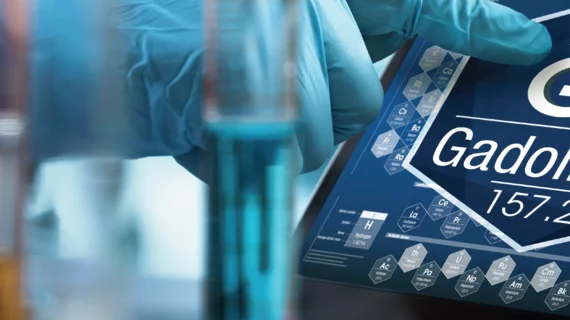New GBCA uses 60% less gadolinium
Bayer’s latest contrast agent is proving its potential in clinical trials as a promising alternative to agents with higher gadolinium content.
Gadoquatrane, an investigational gadolinium-based contrast agent (GBCA), uses 60% less gadolinium without sacrificing image quality, according to new findings from the phase 3 QUANTI trial. The studies are testing the safety and efficacy of gadoquatrane at a gadolinium dose of 0.04 mmol Gd/kg body weight, comparing those findings alongside what has been observed with another one of Bayer’s GBCAs, gadobutrol (Gadavist), which uses a gadolinium dose of 0.1 mmol/kg.
The new high relaxivity agent is being tested for numerous clinical indications, including imaging of the central nervous system, multiple other body regions, and in pediatric patients. So far, gadoquatrane has achieved both primary and secondary endpoints at the lower dose without losing image quality. Researchers also have not identified new safety concerns related to its use.
Principal investigator Professor Julian A. Luetkens, with University Hospital Bonn in Germany, praised the positive findings, highlighting the agent’s potential for mitigating concerns about repetitive gadolinium exposure over time.
“The QUANTI clinical development program is a key step in exploring a reduced gadolinium dose for patients in clinical practice while demonstrating similar efficacy to the trial comparators,” Luetkens said in a release. “This is especially important for patients in need for repeat contrast-enhanced MRI examinations as well as vulnerable populations such as pediatric patients.”
“As a leader in radiology, we are committed to bringing forward innovations for the benefit of patients, including potential options to reduce the gadolinium dose. We are very pleased with the positive topline results of the QUANTI studies and are looking forward to sharing the data with the scientific community,” added Konstanze Diefenbach, MD, head of Radiology Research & Development at Bayer.
A brief presentation at RSNA 2024 detailed some of the positive benefits of gadoquatrane, also highlighting its efficacy in low-field MRI settings, which are gaining popularity due to the improved access they provide.

